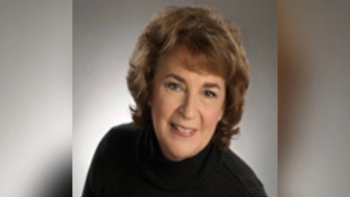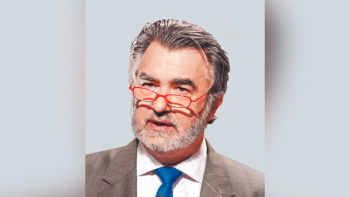
The Challenges of a COVID-19 Clinical Trial
NeuroRx CEO, Jonathan Javitt, and Head of Operations/CCO, Robert Besthof, discuss the logistics and trial progress of their COVID-19 drug.
Operating clinical trials of a COVID-19 drug comes with many challenges, not the least of the pandemic's limitations. NeuroRx CEO Jonathan Javitt, MD, MPH, and Head of Operations/CCO Robert Besthof discuss the logistics and clinical trial progress of their COVID-19 drug, aviptadil.
Moe Alsumidaie: What challenges have you experienced in your studies during the COVID-19 pandemic?
Jonathan Javitt: Probably the most significant challenge has been keeping our people at our study sites healthy. We had three study sites pause or slow down because staff members on the front lines got COVID-19, and some of them needed to be hospitalized. We had sites go down because hospitals were so overwhelmed that they needed to pull every competent person off research.
Keeping a study going in the middle of an epidemic is the opposite of what you would expect. People say, "Oh, there are a million cases. Enrollment ought to be easy." Yes, there are a million cases, but it is like trying to drink water from a fire hose.
MA: When those sites faced challenges, what did you do? Did enrollment stop?
JJ: Once a patient has been treated in our study, the endpoints—survival, recovery from respiratory failure, and whether the patient is on a ventilator or not—are collected automatically. However, enrolling people, getting the infusions done, and obtaining informed consent depends on highly trained people. If you lose them, you pause recruitment at that site until they recover.
MA: Have you adapted your protocol at all?
JJ: When we started the study, 70% of people who developed COVID-19 respiratory failure died of it, so survival was our primary endpoint. However, over the first three months of the pandemic, medical care got much more effective. Suddenly, everybody was getting anticoagulants and steroids. Ventilator use decreased, and survival rates doubled.
Our protocol was initially for COVID-19 associated acute respiratory distress syndrome, and then the Food and Drug Administration (FDA) released updated nomenclature that now everybody uses: COVID-19 with respiratory failure. That is critical because aviptadil targets the cells in the lung that make surfactant, which the lung needs to oxygenate the blood and the rest of the body. The new FDA nomenclature was ideal for our study. We were always targeting respiratory failure.
MA: What steps is NeuroRx taking to maximize operational efficiency in these clinical studies? What have you done to ensure enrollment and recruitment?
JJ: The most crucial difference between the average pharma company and us is that we are doing the clinical operations ourselves. We used a Contract Research Organization (CRO) for the electronic data capture backbone, but we are running all the trial aspects. The study coordinators know they are not talking to some executive who is doing their study today and another study tomorrow; they are talking to us directly.
The thing probably driving enrollment more than anything is that the study staff see patients getting better. We have published X-rays with patients with this white COVID-19 lung clearing in 48 to 96 hours. The study staff has not seen that before with COVID. There is nothing health professionals want more than to see their patients get better.
Robert Besthof: Our team is in close and continuous contact with the sites. When a site reaches out to us for something urgent, we respond, no matter if it is at night or on the weekends. COVID-19 does not pause, and neither do we. This is one element that distinguishes NeuroRx and has enabled us to progress this study so rapidly. If there are medical questions, we allow a rapid dialogue with a pulmonologist / critical care physician or a cardiologist / critical care physician, who support us in this study as consultants.
This vital communication with the sites also helps us prepare for potential challenges, such as the recent surge of hospital admissions that required rapid provisioning of additional drug supplies or maintaining communication continuity when some employees went on furlough.
We are very proud of having this level of trust and communication with our sites. Despite all the technology in this pandemic, the human element is critical.
MA: How did you determine site feasibility for the study?
JJ: We had to have sites where the Intensive Care Unit (ICU) had critical care pulmonology facilities. We were looking for professionals who were double boarded in critical care and pulmonology. We wanted to be evaluating the functionality of our drug with the best possible care.
We also looked for people who have academic credibility with research experience and NIH grants. But first and foremost, we looked for outstanding clinicians with great clinical research teams, especially the coordinators; the kind of person you would want taking care of you if, God forbid, you were in an ICU with COVID.
MA: What about choosing the location of the sites?
JJ: We learned early on. For instance, we announced that NYU Langone would be one of our lead sites. By the time we had the study set up, the epidemic had crested in New York, and new admissions had plummeted. So, we spent much time looking at the maps and understanding where the pandemic was headed next.
MA: Have there been any challenges with drug delivery?
RB: Drug delivery is subject to the challenges of our times. Fortunately, due to our team's close contact with the clinical sites, we can closely track the delivery of aviptadil to the sites.
The most unfortunate circumstances occur when final approval for the participation of a site and its first patient in our Expanded Access Program (EAP) is received on a Friday afternoon, and due to the remoteness of a site, shipping services are not able to deliver the drug until Monday. This affects rural areas more, but we aim to help no matter where you are.
MA: Could you tell me about your EAP? What kind of patients can access it?
JJ: We have treated about 150 patients in the EAP. These are patients that have comorbidities that would exclude them from the randomized control trial. If these patients get to the point where they have developed respiratory failure from COVID-19, they have an 80% mortality rate. In our EAP, we have about 75% survival. We have people whose families worry that their loved one is terminal, and the patient goes home on room air. It is very striking.
MA: Because of your hands-on approach, you must be interacting with patients directly.
JJ: We have become part of families in some ways. We had two sons, both physicians, drive from Arizona to Los Angeles to get the study drug for their father. The families that have been able to get their relatives into the EAP have gone to great lengths to do it.
RB: Having lost family friends to COVID-19, we approach patients with great empathy. Most individuals call looking for any opportunity to treat a loved one who has been in a critical stage for several weeks. The hospital has told them that they had exhausted all options, typically because they are in remote locations and not participating in clinical studies.
We direct them to information on our website for a treating physician to apply to our EAP. We have to clarify that aviptadil is in clinical studies and that the physician must make the decision. Unfortunately, for some hospitals, the process can take several days and frequently more than one week, and the condition of the patient can continue to deteriorate.
JJ: It is undoubtedly, the most challenging clinical trial I have ever been involved in, but by far the most rewarding.
Moe Alsumidaie, MBA, MSF, is a thought leader and expert in the application of business analytics toward clinical trials, and Editorial Advisory Board member for and regular contributor to Applied Clinical Trials.
Newsletter
Stay current in clinical research with Applied Clinical Trials, providing expert insights, regulatory updates, and practical strategies for successful clinical trial design and execution.






.png)



.png)



.png)
.png)
